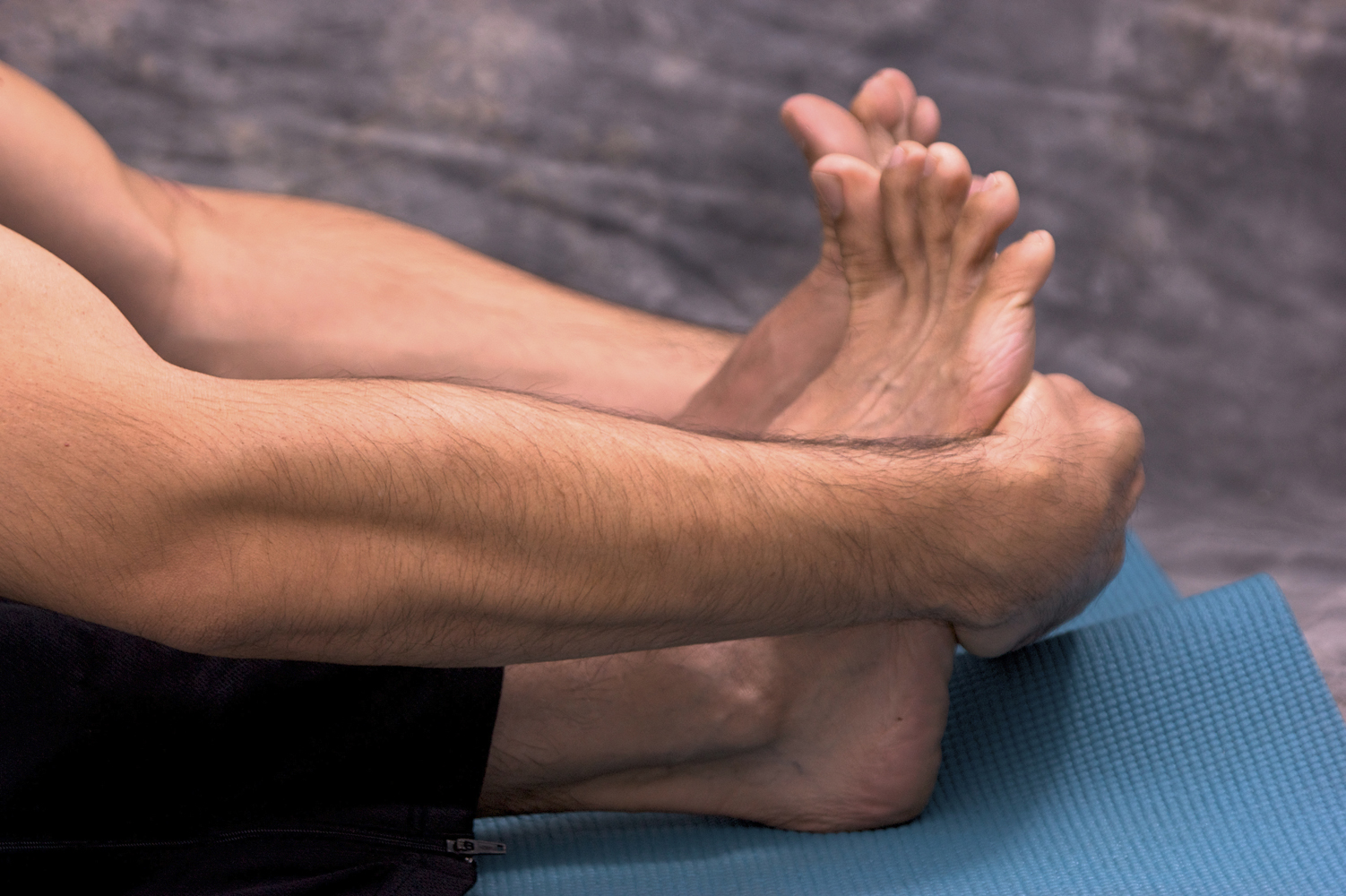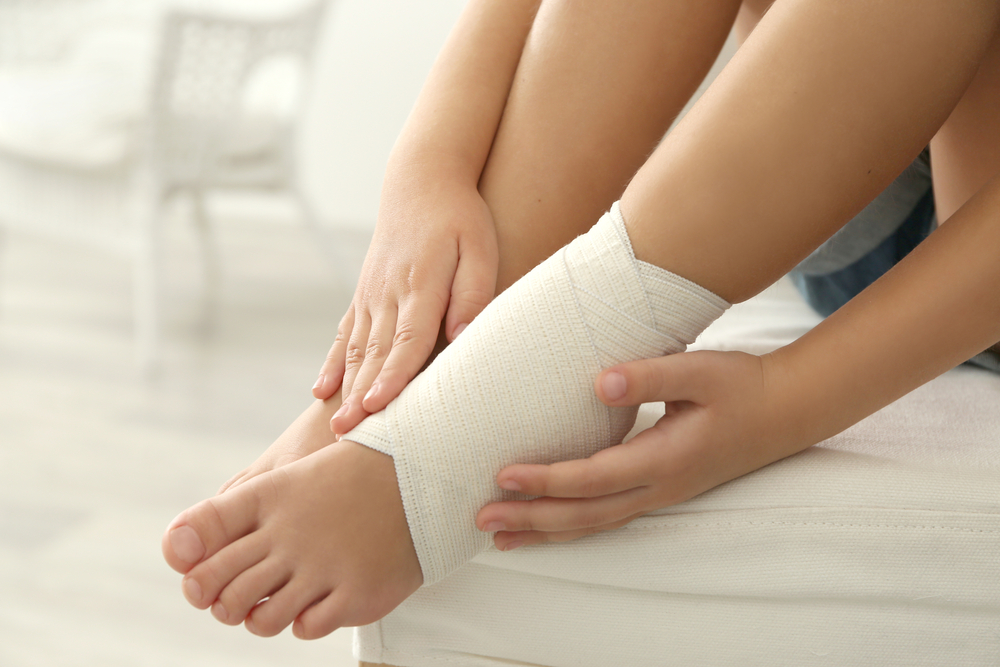Items filtered by date: December 2020
Measuring Children’s Feet
 It is beneficial for children who have not begun walking yet to crawl while barefoot. As your child gets older, it is important to have their feet measured. This can be helpful in determining what size shoes your child should wear. The basic rules for choosing the correct shoes include ensuring that there is adequate room for the toes to move freely in, and for the shoes to be made with breathable materials. Many children are born with flat feet, and certain foot ailments may develop over time. It is suggested that you schedule a consultation with a podiatrist who can properly assess any foot conditions that may be present.
It is beneficial for children who have not begun walking yet to crawl while barefoot. As your child gets older, it is important to have their feet measured. This can be helpful in determining what size shoes your child should wear. The basic rules for choosing the correct shoes include ensuring that there is adequate room for the toes to move freely in, and for the shoes to be made with breathable materials. Many children are born with flat feet, and certain foot ailments may develop over time. It is suggested that you schedule a consultation with a podiatrist who can properly assess any foot conditions that may be present.
Making sure that your children maintain good foot health is very important as they grow. If you have any questions, contact Dr. John P. Beaupied of Palos Podiatry. Our doctor can provide the care you need to keep you pain-free and on your feet.
Keeping Children's Feet Healthy
Having healthy feet during childhood can help prevent medical problems later in life, namely in the back and legs. As children grow, their feet require different types of care. Here are some things to consider...
Although babies do not walk yet, it is still very important to take care of their feet.
Avoid putting tight shoes or socks on his or her feet.
Allow the baby to stretch and kick his or her feet to feel comfortable.
As a toddler, kids are now on the move and begin to develop differently. At this age, toddlers are getting a feel for walking, so don’t be alarmed if your toddler is unsteady or ‘walks funny’.
As your child gets older, it is important to teach them how to take care of their feet.
Show them proper hygiene to prevent infections such as fungus.
Be watchful for any pain or injury.
Have all injuries checked by a doctor as soon as possible.
Comfortable, protective shoes should always be worn, especially at play.
If you have any questions please feel free to contact our office located in Palos Heights, IL . We offer the newest diagnostic and treatment technologies for all your foot and ankle needs.
What Can Cause Ankle Swelling?
Swelling in the ankles can be caused by conditions that specifically affect the ankle or by systemic conditions that affect the whole body. Often, the cause of swelling in an ankle is an injury, such as a strain or a sprain. Strains are the result of overstretched muscles or tendons in the affected area, whereas sprains occur when the ligaments in the ankle are overstretched or torn. Diseases of the joints, such as arthritis, can also lead to swelling in the feet or ankles. Pregnancy and obesity may lead to swelling in the ankles due to fluid retention and poor circulation. Treatment for swollen ankles will depend on what is causing the swelling. For more information, please consult with a podiatrist.
When dealing with systemic disease of the feet, it is extremely important to check the affected areas routinely so that any additional problems are caught quickly. If you have any concerns about your feet and ankles contact Dr. John P. Beaupied from Palos Podiatry. Our doctor will assist you with all of your podiatric needs.
Systemic Diseases of the Feet
Systemic diseases affect the whole body, and symptoms usually are displayed in the feet. This condition can make a patient’s ability to walk unbearable. Systemic diseases include gout, diabetes mellitus, neurological disorders, and arthritis.
Gout – is caused by an excess of uric acid in the body. Common symptoms include pain, inflammation, and redness at the metatarsal/phalangeal joint of the base big toe. Gout can be treated by NSAIDs to relieve pain and inflammation, and other drugs that lower the acid levels in the body.
Diabetes mellitus – is an increase in the level of blood sugar that the body cannot counteract with its own insulin. Failure to produce enough insulin is a factor in Diabetes.
Diabetes of the Feet
Diabetic Neuropathy – may lead to damaged nerves and affect the feet through numbness and loss of sensation.
Peripheral Vascular Disease – can restrict the blood flow to the feet, and often times lead to amputation of the feet.
If you have any questions please feel free to contact our office located in Palos Heights, IL . We offer the newest diagnostic and treatment technologies for all your foot and ankle needs.
Wounds That Don't Heal Need to Be Checked
Stretching and Strengthening Your Feet
 The feet are the foundation of the body, but are often forgotten during exercise and self-care routines. Keeping your feet strong, flexible, and mobile is important for your overall health. There are various foot exercises that can maintain and improve your foot health. You can build foot strength by exercising the intrinsic foot muscles. Strengthen the foot and improve your toe and foot mobility by doing independent toe lifts. Sit with your feet touching the floor and slowly lift or extend just your big toe, while keeping the other toes on the floor. Then lower the big toe and lift the other four toes. For more information about the benefits of stretching the feet, please consult with a podiatrist.
The feet are the foundation of the body, but are often forgotten during exercise and self-care routines. Keeping your feet strong, flexible, and mobile is important for your overall health. There are various foot exercises that can maintain and improve your foot health. You can build foot strength by exercising the intrinsic foot muscles. Strengthen the foot and improve your toe and foot mobility by doing independent toe lifts. Sit with your feet touching the floor and slowly lift or extend just your big toe, while keeping the other toes on the floor. Then lower the big toe and lift the other four toes. For more information about the benefits of stretching the feet, please consult with a podiatrist.
Stretching the feet is a great way to prevent injuries. If you have any concerns with your feet consult with Dr. John P. Beaupied from Palos Podiatry. Our doctor will assess your condition and provide you with quality foot and ankle treatment.
Stretching the Feet
Stretching the muscles in the foot is an important part in any physical activity. Feet that are tight can lead to less flexibility and make you more prone to injury. One of the most common forms of foot pain, plantar fasciitis, can be stretched out to help ease the pain. Stretching can not only ease pain from plantar fasciitis but also prevent it as well. However, it is important to see a podiatrist first if stretching is right for you. Podiatrists can also recommend other ways to stretch your feet. Once you know whether stretching is right for you, here are some excellent stretches you can do.
- Using a foam roller or any cylindrical object (a water bottle or soda can will do), roll the object under your foot back and forth. You should also exert pressure on the object. Be sure to do this to both feet for a minute. Do this exercise three times each.
- Similar to the previous one, take a ball, such as a tennis ball, and roll it under your foot while seated and exert pressure on it.
- Grab a resistance band or towel and take a seat. If you are using a towel, fold it length wise. Next put either one between the ball of your foot and heel and pull with both hands on each side towards you. Hold this for 15 seconds and then switch feet. Do this three times for each foot.
- Finally hold your big toe while crossing one leg over the other. Pull the toe towards you and hold for 15 seconds. Once again do this three times per foot.
It is best to go easy when first stretching your foot and work your way up. If your foot starts hurting, stop exercising and ice and rest the foot. It is advised to then see a podiatrist for help.
If you have any questions, please feel free to contact our office located in Palos Heights, IL . We offer the newest diagnostic and treatment technologies for all your foot care needs.
Stress Fractures May Affect the Ankles
 The bone that protrudes on the inside of the ankle is known as the medial malleolus. A stress fracture can occur when this bone and the surrounding area become unbalanced. This may happen as a result of practicing weight-bearing exercises and can gradually cause severe pain and discomfort. Additional reasons why patients may endure a stress fracture can include changing the shoes that are worn during exercising or suddenly increasing exercise intensity levels. Some of the symptoms that can be experienced include a limited range of motion, stiffness, and difficulty walking. There are several treatment options that are available, and it is recommended that you consult with a podiatrist who can determine what the best treatment is for you.
The bone that protrudes on the inside of the ankle is known as the medial malleolus. A stress fracture can occur when this bone and the surrounding area become unbalanced. This may happen as a result of practicing weight-bearing exercises and can gradually cause severe pain and discomfort. Additional reasons why patients may endure a stress fracture can include changing the shoes that are worn during exercising or suddenly increasing exercise intensity levels. Some of the symptoms that can be experienced include a limited range of motion, stiffness, and difficulty walking. There are several treatment options that are available, and it is recommended that you consult with a podiatrist who can determine what the best treatment is for you.
Stress fractures occur when there is a tiny crack within a bone. To learn more, contact Dr. John P. Beaupied from Palos Podiatry. Our doctor can provide the care you need to keep you pain free and on your feet.
How Are They Caused?
Stress fractures are the result of repetitive force being placed on the bone. Since the lower leg and feet often carry most of the body’s weight, stress fractures are likely to occur in these areas. If you rush into a new exercise, you are more likely to develop a stress fracture since you are starting too much, too soon. Pain resulting from stress fractures may go unnoticed at first, however it may start to worsen over time.
Risk Factors
- Gender – They are more commonly found in women compared to men.
- Foot Problems – People with unusual arches in their feet are more likely to develop stress fractures.
- Certain Sports – Dancers, gymnasts, tennis players, runners, and basketball players are more likely to develop stress fractures.
- Lack of Nutrients – A lack of vitamin D and calcium may weaken the bones and make you more prone to stress fractures
- Weak Bones – Osteoporosis can weaken the bones therefore resulting in stress fractures
Stress fractures do not always heal properly, so it is important that you seek help from a podiatrist if you suspect you may have one. Ignoring your stress fracture may cause it to worsen, and you may develop chronic pain as well as additional fractures.
If you have any questions, please feel free to contact our office located in Palos Heights, IL . We offer the newest diagnostic and treatment technologies for all your foot care needs.





